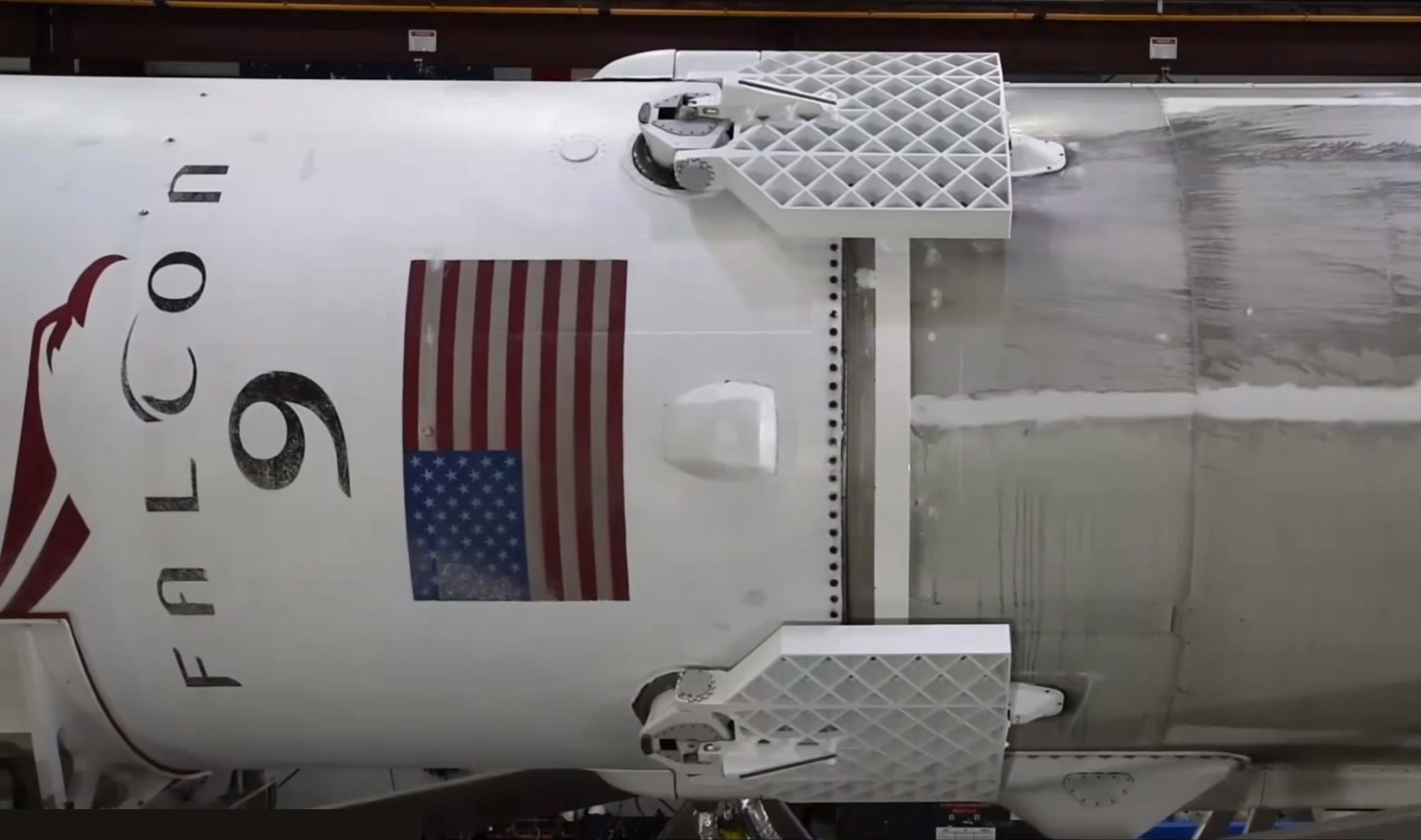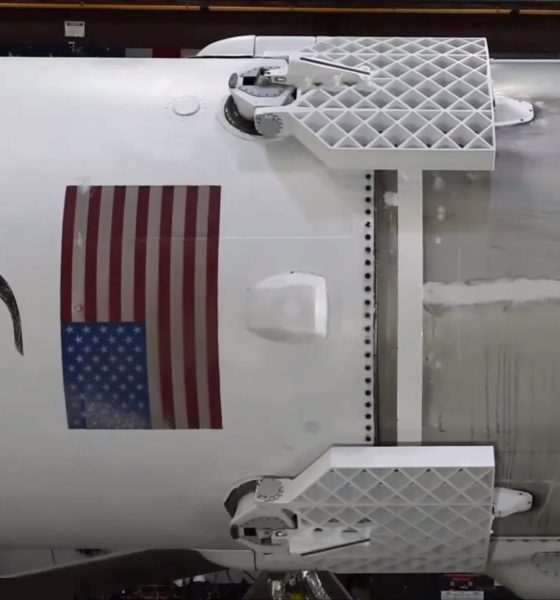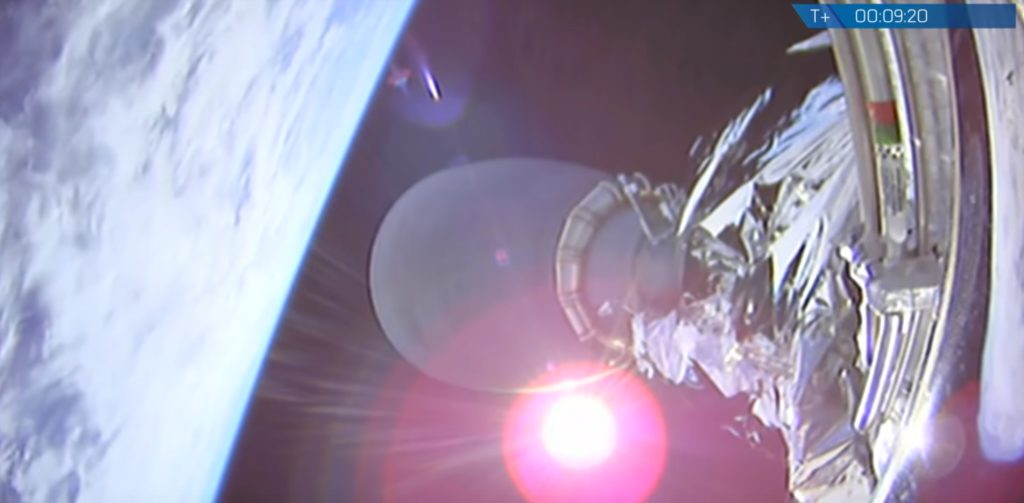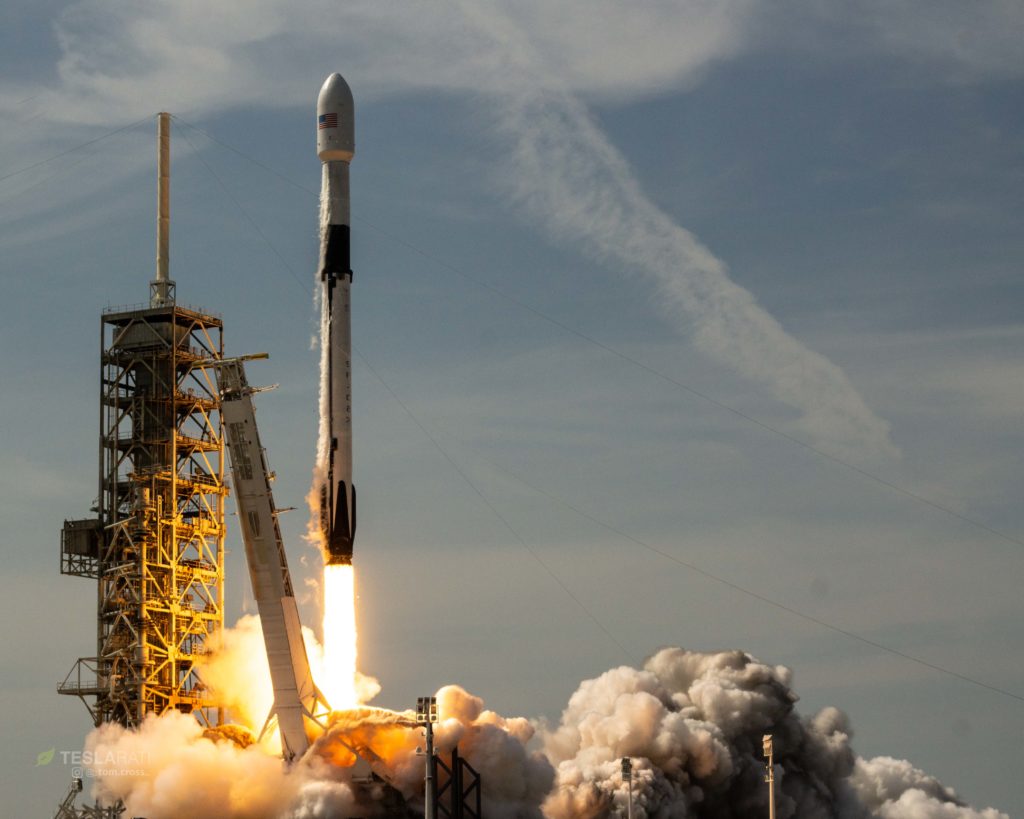

News
SpaceX to fly ‘hybrid’ Falcon 9 with Block 4 and 5 stages on June 4 launch
According to SES chief technical officer Martin Halliwell, SpaceX intends to “thread the needle” with a unique hybrid Falcon 9 launch of his company’s SES-12 communications satellite on June 4th.
In the case of this launch, Halliwell’s “needle” refers to unsavory weather conditions present at Florida’s Cape Canaveral launch facilities, although weather appears to be improving significantly over the next few days. Originally scheduled for launch on May 24, SES-12 was pushed to May 31, June 1st, and finally June 4th, according to a tweet from SpaceX earlier this morning. Minor difficulties with hardware in the Falcon 9’s Block 5 upper stage required additional troubleshooting and were ultimately magnified by the fact that Cape Canaveral Air Force Station’s range is technically supposed to be closed for launches at the moment, a shutdown of two or so weeks meant to allow the station’s range to conduct routine maintenance and install upgraded hardware (radar, meteorology, helicopter maintenance, avionics, software, etc).
https://twitter.com/_TomCross_/status/1002217744421609474
As such, it’s unlikely that the minor upper stage hardware issues referenced by SpaceX literally entailed a 72 hour delay. In fact, it’s fairly unique for the Eastern Range to go so out of their way to accommodate launches well within a closure period – May 28 to June 9 – scheduled months in advance. Once SpaceX’s SES-12 mission is completed, the range will likely try to complete necessary maintenance ops.

Falcon 9 B1040 returns to Landing Zone-1 after launching the X-37B spaceplane. It’s second and final flight will be with the SES-12 communications satellite. (SpaceX)
In a press conference hosted by the satellite operator SES, CTO Martin Halliwell further discussed some of the more technical aspects of the imminent SpaceX launch, waxing poetic about the particular flight-proven rocket’s fusion of a Block 4 Falcon 9 first stage and a Block 5 upper stage. With its “monster” Block 5 Merlin Vacuum engine, Halliwell noted that the extra performance provided by the upgraded second stage’s higher thrust, the expendable first stage launch profile, and the removal of its grid fins and landing legs could enable as much as seven years of additional operational life for the massive communications satellite.
Although the CTO did not explicitly confirm it, his comments indicate that this launch of the Block 5 upper stage – likely the third after Falcon 9 Block 5’s May 11 debut – may operate at 5% higher thrust for the first time, something briefly discussed by SpaceX CEO Elon Musk in a press call before the Block 5 debut. In that call, the CEO stated that the upgraded vacuum version of Merlin would fly with its thrust downrated by 5% to avoid risking a customer’s payload while ensuring that the hardware and software upgrades were functioning as intended. It appears that the data and experience provided by the Bangabandhu-1 mission’s downrated thrust profile was extremely encouraging, leading SpaceX to open the throttle a bit more with the SES-12 mission, so to speak.
- Falcon 9 1046’s Block 5 upper stage shown on its May 11 debut launch with Bangabandhu-1. SpaceX’s rockets already provide rich telemetry live to the company’s launch controllers. (SpaceX)
- Falcon 9 Block 5 completed its first launch on May 11, carrying the Bangabandhu-1 communications satellite to geostationary transfer orbit. (Tom Cross)
Falcon 9 B1040, the reused booster tasked with launching the second stage and satellite above Earth’s atmosphere, previously flew on September 7, 2017, launching the USAF’s secretive X-37B spaceplane into low Earth orbit. Teslarati photographer Tom Cross will capture the booster’s last flight around 12:30am on June 4th.

Elon Musk
Elon Musk’s X will start using a Tesla-like software update strategy
The initiative seems designed to accelerate updates to the social media platform, while maintaining maximum transparency.

Elon Musk’s social media platform X will adopt a Tesla-esque approach to software updates for its algorithm.
The initiative seems designed to accelerate updates to the social media platform, while maintaining maximum transparency.
X’s updates to its updates
As per Musk in a post on X, the social media company will be making a new algorithm to determine what organic and advertising posts are recommended to users. These updates would then be repeated every four weeks.
“We will make the new 𝕏 algorithm, including all code used to determine what organic and advertising posts are recommended to users, open source in 7 days. This will be repeated every 4 weeks, with comprehensive developer notes, to help you understand what changed,” Musk wrote in his post.
The initiative somewhat mirrors Tesla’s over-the-air update model, where vehicle software is regularly refined and pushed to users with detailed release notes. This should allow users to better understand the details of X’s every update and foster a healthy feedback loop for the social media platform.
xAI and X
X, formerly Twitter, has been acquired by Elon Musk’s artificial intelligence startup, xAI last year. Since then, xAI has seen a rapid rise in valuation. Following the company’s the company’s upsized $20 billion Series E funding round, estimates now suggest that xAI is worth tens about $230 to $235 billion. That’s several times larger than Tesla when Elon Musk received his controversial 2018 CEO Performance Award.
As per xAI, the Series E funding round attracted a diverse group of investors, including Valor Equity Partners, Stepstone Group, Fidelity Management & Research Company, Qatar Investment Authority, MGX, and Baron Capital Group, among others. Strategic partners NVIDIA and Cisco Investments also continued support for building the world’s largest GPU clusters.
News
Tesla FSD Supervised wins MotorTrend’s Best Driver Assistance Award
The decision marks a notable reversal for the publication from prior years, with judges citing major real-world improvements that pushed Tesla’s latest FSD software ahead of every competing ADAS system.

Tesla’s Full Self-Driving (Supervised) system has been named the best driver-assistance technology on the market, earning top honors at the 2026 MotorTrend Best Tech Awards.
The decision marks a notable reversal for the publication from prior years, with judges citing major real-world improvements that pushed Tesla’s latest FSD software ahead of every competing ADAS system. And it wasn’t even close.
MotorTrend reverses course
MotorTrend awarded Tesla FSD (Supervised) its 2026 Best Tech Driver Assistance title after extensive testing of the latest v14 software. The publication acknowledged that it had previously criticized earlier versions of FSD for erratic behavior and near-miss incidents, ultimately favoring rivals such as GM’s Super Cruise in earlier evaluations.
According to MotorTrend, the newest iteration of FSD resolved many of those shortcomings. Testers said v14 showed far smoother behavior in complex urban scenarios, including unprotected left turns, traffic circles, emergency vehicles, and dense city streets. While the system still requires constant driver supervision, judges concluded that no other advanced driver-assistance system currently matches its breadth of capability.
Unlike rival systems that rely on combinations of cameras, radar, lidar, and mapped highways, Tesla’s FSD operates using a camera-only approach and is capable of driving on city streets, rural roads, and freeways. MotorTrend stated that pure utility, the ability to handle nearly all road types, ultimately separated FSD from competitors like Ford BlueCruise, GM Super Cruise, and BMW’s Highway Assistant.
High cost and high capability
MotorTrend also addressed FSD’s pricing, which remains significantly higher than rival systems. Tesla currently charges $8,000 for a one-time purchase or $99 per month for a subscription, compared with far lower upfront and subscription costs from other automakers. The publication noted that the premium is justified given FSD’s unmatched scope and continuous software evolution.
Safety remained a central focus of the evaluation. While testers reported collision-free operation over thousands of miles, they noted ongoing concerns around FSD’s configurable driving modes, including options that allow aggressive driving and speeds beyond posted limits. MotorTrend emphasized that, like all Level 2 systems, FSD still depends on a fully attentive human driver at all times.
Despite those caveats, the publication concluded that Tesla’s rapid software progress fundamentally reshaped the competitive landscape. For drivers seeking the most capable hands-on driver-assistance system available today, MotorTrend concluded Tesla FSD (Supervised) now stands alone at the top.
News
Elon Musk’s Grokipedia surges to 5.6M articles, almost 79% of English Wikipedia
The explosive growth marks a major milestone for the AI-powered online encyclopedia, which was launched by Elon Musk’s xAI just months ago.

Elon Musk’s Grokipedia has grown to an impressive 5,615,201 articles as of today, closing in on 79% of the English Wikipedia’s current total of 7,119,376 articles.
The explosive growth marks a major milestone for the AI-powered online encyclopedia, which was launched by Elon Musk’s xAI just months ago. Needless to say, it would only be a matter of time before Grokipedia exceeds English Wikipedia in sheer volume.
Grokipedia’s rapid growth
xAI’s vision for Grokipedia emphasizes neutrality, while Grok’s reasoning capabilities allow for fast drafting and fact-checking. When Elon Musk announced the initiative in late September 2025, he noted that Grokipedia would be an improvement to Wikipedia because it would be designed to avoid bias.
At the time, Musk noted that Grokipedia “is a necessary step towards the xAI goal of understanding the Universe.”
Grokipedia was launched in late October, and while xAI was careful to list it only as Version 0.1 at the time, the online encyclopedia immediately earned praise. Wikipedia co-founder Larry Sanger highlighted the project’s innovative approach, noting how it leverages AI to fill knowledge gaps and enable rapid updates. Netizens also observed how Grokipedia tends to present articles in a more objective manner compared to Wikipedia, which is edited by humans.
Elon Musk’s ambitious plans
With 5,615,201 total articles, Grokipedia has now grown to almost 79% of English Wikipedia’s article base. This is incredibly quick, though Grokipedia remains text-only for now. xAI, for its part, has now updated the online encyclopedia’s iteration to v0.2.
Elon Musk has shared bold ideas for Grokipedia, including sending a record of the entire knowledge base to space as part of xAI’s mission to preserve and expand human understanding. At some point, Musk stated that Grokipedia will be renamed to Encyclopedia Galactica, and it will be sent to the cosmos.
“When Grokipedia is good enough (long way to go), we will change the name to Encyclopedia Galactica. It will be an open source distillation of all knowledge, including audio, images and video. Join xAI to help build the sci-fi version of the Library of Alexandria!” Musk wrote, adding in a later post that “Copies will be etched in stone and sent to the Moon, Mars and beyond. This time, it will not be lost.”










